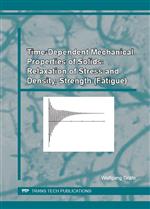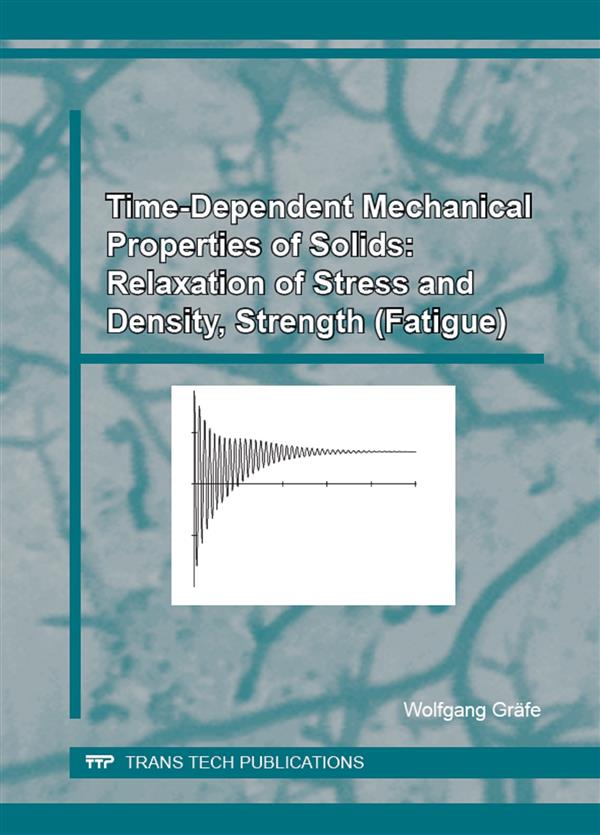Engineering Research
Materials Science
Engineering Series
Relaxation of Stress and Density, Strength (Fatigue)
Description:
Purchase this book:
Info:
Review from Ringgold Inc., ProtoView:
Aiming to improve technical safety in traffic and other fields, this book examines the time-dependent mechanical properties of solids like metallic alloys and silicate glasses, focusing on the relaxation of mechanical stresses, density relaxation, internal friction, static fatigue, and the reduction of strength caused by a cyclic loading. It addresses migration processes in solids, stress and density relaxation in glasses, the background on internal friction, creep of steel and the static fatigue of glass, the activation energy of the static fatigue and creep, fatigue due to an oscillating load, statistical checks of Stromeyer's fatigue formula, models for defect growth, generalized laws of strength degradation, a compressive stress resulting from Tamm's electronic surface states, the activation energy of creep and the surface energy of solids, and other aspects. This edition has new chapter on environmental influences on fatigue strength, new appendices, and new sections.
Ringgold Subjects:
— Civil engineering
— Materials science
— Mechanical engineering

